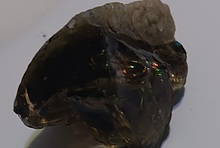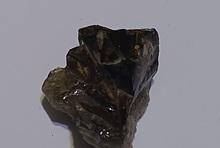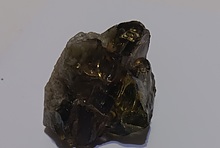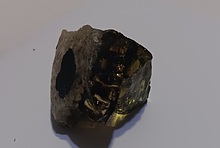Home PageAbout MindatThe Mindat ManualHistory of MindatCopyright StatusWho We AreContact UsAdvertise on Mindat
Donate to MindatCorporate SponsorshipSponsor a PageSponsored PagesMindat AdvertisersAdvertise on Mindat
Learning CenterWhat is a mineral?The most common minerals on earthInformation for EducatorsMindat ArticlesThe ElementsThe Rock H. Currier Digital LibraryGeologic Time
Minerals by PropertiesMinerals by ChemistryAdvanced Locality SearchRandom MineralRandom LocalitySearch by minIDLocalities Near MeSearch ArticlesSearch GlossaryMore Search Options
The Mindat ManualAdd a New PhotoRate PhotosLocality Edit ReportCoordinate Completion ReportAdd Glossary Item
Mining CompaniesStatisticsUsersMineral MuseumsClubs & OrganizationsMineral Shows & EventsThe Mindat DirectoryDevice SettingsThe Mineral Quiz
Photo SearchPhoto GalleriesSearch by ColorNew Photos TodayNew Photos YesterdayMembers' Photo GalleriesPast Photo of the Day GalleryPhotography
╳Discussions
💬 Home🔎 Search📅 LatestGroups
EducationOpen discussion area.Fakes & FraudsOpen discussion area.Field CollectingOpen discussion area.FossilsOpen discussion area.Gems and GemologyOpen discussion area.GeneralOpen discussion area.How to ContributeOpen discussion area.Identity HelpOpen discussion area.Improving Mindat.orgOpen discussion area.LocalitiesOpen discussion area.Lost and Stolen SpecimensOpen discussion area.MarketplaceOpen discussion area.MeteoritesOpen discussion area.Mindat ProductsOpen discussion area.Mineral ExchangesOpen discussion area.Mineral PhotographyOpen discussion area.Mineral ShowsOpen discussion area.Mineralogical ClassificationOpen discussion area.Mineralogy CourseOpen discussion area.MineralsOpen discussion area.Minerals and MuseumsOpen discussion area.PhotosOpen discussion area.Techniques for CollectorsOpen discussion area.The Rock H. Currier Digital LibraryOpen discussion area.UV MineralsOpen discussion area.Recent Images in Discussions
Mineralogical ClassificationCrystal chemistry of the mixite group and (re-)distribution of REE between minerals
20th Jan 2012 15:20 UTCUwe Kolitsch Manager
Minerals of the rare-earth elements (REE) occur as supergene phases in the Schwarzwald ore district, southwestern Germany. They form by alteration of hydrothermal fluorite – barite – quartz – carbonate veins with various associations, including Cu– Pb, Pb–Zn and Co–Bi–Ag–U assemblages in sandstones, gneisses and granites. The REE minerals, including mixite-group minerals (Cu6(AsO4,AsO3OH)3OH6•3H2O), rhabdophane and churchite (REEPO4•H2O and REEPO4•2H2O), chukhrovite (Ca3REEAl2SO4F13•10H2O) and bastnäsite (REECO3F), were analyzed by electron microprobe and LA–ICP–MS. In addition, REE concentrations in secondary fluorite, calcite and Mn oxides cogenetic with the REE minerals were determined by LA–ICP–MS. Results of analyses of 74 mixite-group samples from 20 localities in the Schwarzwald ore district show that continuous miscibility is possible between REE and Ca and between Bi and Ca end-members. In contrast, no miscibility seems to exist between the Bi and REE end-members, and only Ca-rich members can accommodate small amounts of both Bi and REE. The REE phosphates churchite and rhabdophane do not occur at the same locality in the Schwarzwald, which is probably dependent on which REE (light or heavy) predominate at a certain locality. Whereas churchite incorporates heavy REE (HREE), rhabdophane prefers light REE (LREE). Dependent on the source of the REE, either HREE or LREE dominate in an alteration fluid and, consequently, only one type of REE phosphate forms. The HREE dominate in such a fluid if REE originate from dissolved “pitchblende”, whereas the LREE dominate if the altered host-rock or dissolved fluorite are the source of the REE. The REE contents of Mn oxides and calcite cogenetic with REE-bearing mixite-group minerals show that the REE distribution of secondary minerals can be influenced by each other. Whereas the Mn oxides incorporate Ce4+ resulting in a positive Ce anomaly, a cogenetic mixite-group mineral develops a negative anomaly, which shows that Ce anomalies are coupled. Calcite intergrown with a mixite-group mineral can only incorporate those REE that are not consumed by the latter. These processes involve the distribution of REE between minerals on the micrometer scale and do not take place until minerals precipitate. However, sorption and complexation processes also take place during transport on a larger scale and produce decoupled Ce anomalies. This interplay between large- and small-scale processes results in a complex redistribution of REE during remobilization.




Mindat.org is an outreach project of the Hudson Institute of Mineralogy, a 501(c)(3) not-for-profit organization.
Copyright © mindat.org and the Hudson Institute of Mineralogy 1993-2024, except where stated. Most political location boundaries are © OpenStreetMap contributors. Mindat.org relies on the contributions of thousands of members and supporters. Founded in 2000 by Jolyon Ralph.
Privacy Policy - Terms & Conditions - Contact Us / DMCA issues - Report a bug/vulnerability Current server date and time: April 19, 2024 14:20:33
Copyright © mindat.org and the Hudson Institute of Mineralogy 1993-2024, except where stated. Most political location boundaries are © OpenStreetMap contributors. Mindat.org relies on the contributions of thousands of members and supporters. Founded in 2000 by Jolyon Ralph.
Privacy Policy - Terms & Conditions - Contact Us / DMCA issues - Report a bug/vulnerability Current server date and time: April 19, 2024 14:20:33










